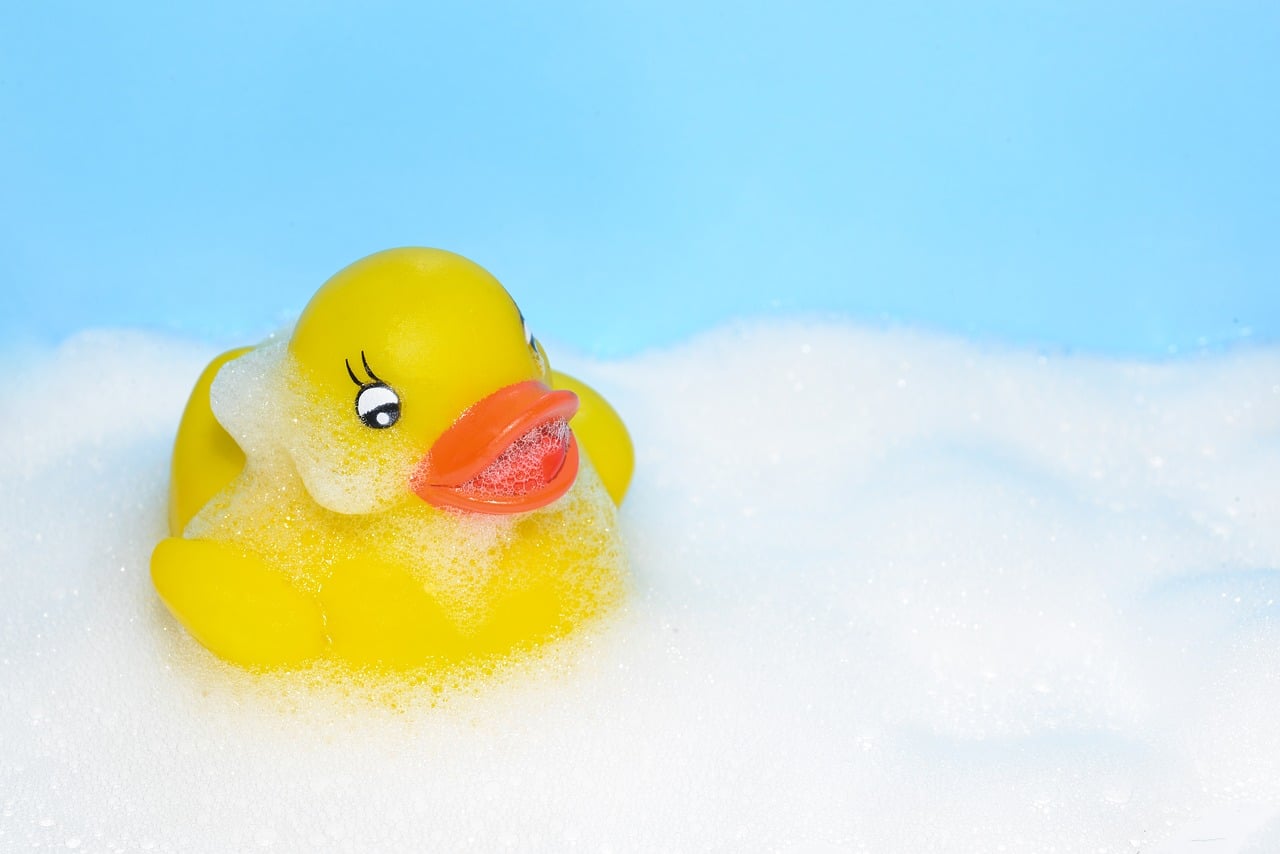It turns out that the rubber ducks your child enjoys so much during bath time are actually hotbeds for nasty bugs.
In a collaboration between Swiss and American researchers, an experiment was conducted in which they counted the microbes swimming inside rubber ducks – and the results weren’t exactly encouraging. The scientists reported that the liquid that is released with rubber ducks are squeezed contains “potentially pathogenic bacteria” – and this was found in four out of the five toys studied.
The nasty bugs from the rubber ducks have the potential to cause serious illness, and included both Legionella and Pseudomonas aeruginosa – a bacterium that is “often implicated in hospital-acquired infections.”
The rubber ducks study was carried out by the Swiss Federal Institute of Aquatic Science and Technology, ETH Zurich, and the University of Illinois, and was published Tuesday in the journal Biofilms and Microbiomes. This is the first time that scientists have taken a close look at these bath toys – and it turns out that the toys your children use when getting clean are harboring potentially dangerous pathogens.
It goes to show that areas we expect to be clean may not exactly be as sanitary as we thought. There are plenty of outlets online that report how dirty your kitchen sink is – perhaps even being one of the dirtiest places in the house. There are pathogens everywhere, and while we can do our best to protect ourselves from exposure by being cleanly and mindful of the risks, these microscopic microbes can manage to squeeze into the most unlikely of spots.
The rubber ducks held the bacteria at a strikingly high volume – up to 0.15 square inch – and a variety of bacteria and fungi were found within the ducks.
It’s important to note that while keeping kids away from germs is a good thing overall, experience to small amounts of bacteria can help strengthen a child’s immune system. So it’s important not to panic and go into deep cleaning mode after learning about the filthy rubber ducks. While the Swiss Institute hasn’t given any guidelines on how to address the situation, it may be in your best interest to swap out the toy for something that doesn’t hold water in the same way – perhaps as a solid toy that has little potential to harbor bacteria.
The scientists who conducted the study using funding from the Swiss government were part of a larger research initiative into household objects. They have suggested that using higher-quality polymers to make the rubber ducks might be able to prevent bacterial and fungal growth – but that may quickly turn a cheap bath time toy into something more expensive. Still, considering the illnesses that may result from using average rubber ducks in their current design, it’s certainly something that both researchers and manufacturers will have to look into.
So maybe next time you’re giving your young child a bath, skip the rubber ducks and either skip the toys entirely or opt for something less likely to contain a breeding ground for pathogens and other bacteria.
Moving forward, more research is needed before the Swiss government can make a conclusive statement as to the safety and cleanliness of this bath toy. It will be interesting to see the kind of research we see from the program as a whole as we learn more about the average household object and learn to be more mindful of unexpected sources of germs.





